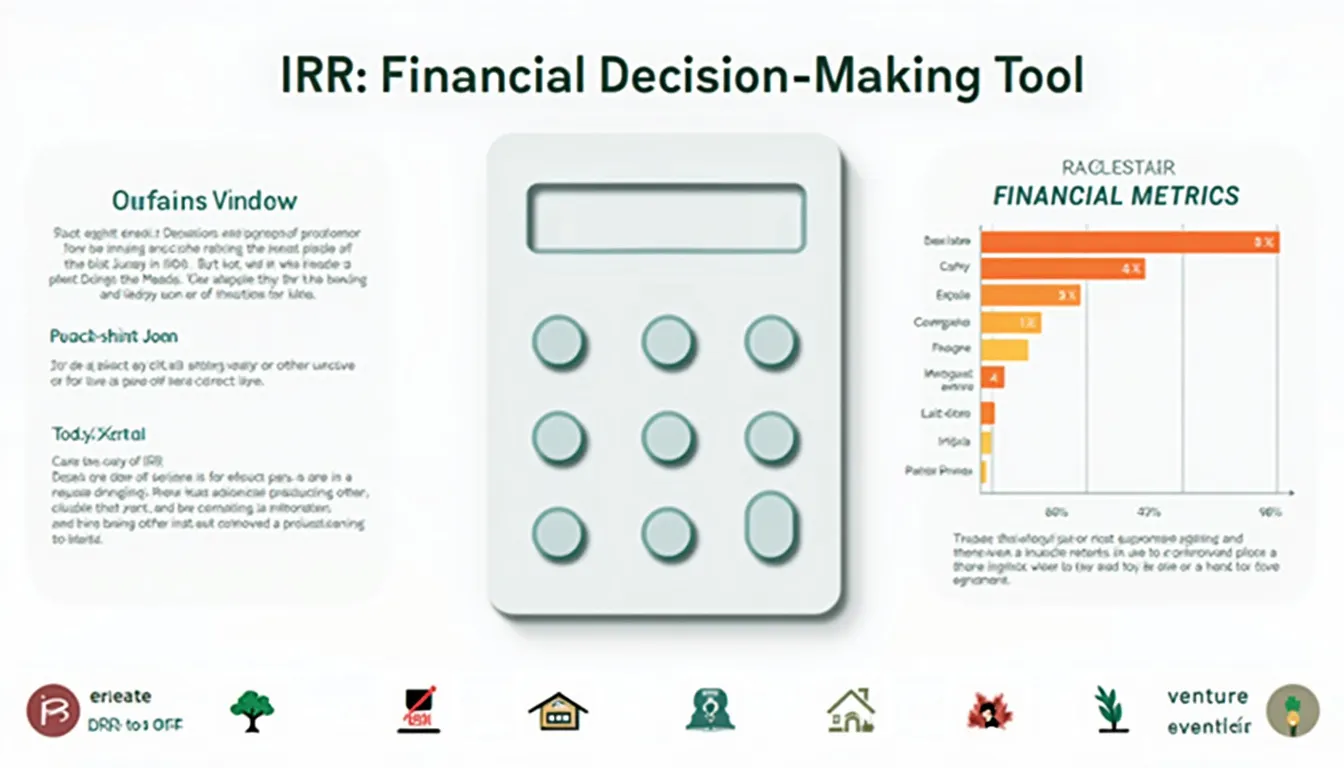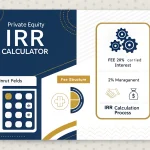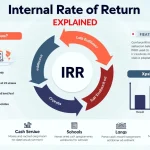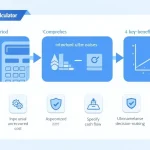IRR Calculator
How to use the tool
- Initial investment – type the outflow as a negative number.
Example 1: -12 750 Example 2: -3 900 - Cash-flow periods – click “Add Period” for each future inflow or extra outflow.
Example 1: 4 600 in Period 1, 5 100 in Period 2 Example 2: 1 800, 2 200, 2 400 - Optional settings
- Initial guess – any decimal, e.g., 0.08 or 0.17.
- Tolerance – smaller numbers (0.00001) raise accuracy.
- Max iterations – raise above 1 000 for irregular streams.
- Press “Calculate IRR.” The script loops:
$$ NPV(r)=\sum_{t=0}^{n} rac{C_t}{(1+r)^t}\qquad NPV'(r)=-\sum_{t=0}^{n} t\cdot rac{C_t}{(1+r)^{t+1}} $$
$$ r_{new}=r_{old}- rac{NPV(r_{old})}{NPV'(r_{old})} $$ until |NPV| < tolerance. - Read outputs. You’ll see IRR %, NPV at that IRR (≈ 0), iterations, plus a bar chart for visual review.
Worked example
- C0 = -15 000
- C1 = 5 000, C2 = 7 000, C3 = 8 000
Quick-Facts
- Typical corporate hurdle rate: 8-15 % IRR (Deloitte 2022 Global Cost of Capital Study).
- The calculator uses the Newton-Raphson root-finding method (Numerical Recipes 3e, 2014).
- IRR assumes reinvestment at the same rate, a known limitation (Damodaran, NYU, 2021).
- NPV and IRR rank projects identically when cash-flows are conventional (CFA Institute Curriculum 2020).
FAQ
What does the IRR value mean?
IRR is the discount rate that drives your project’s NPV to zero; if IRR exceeds your required return, the project adds value (Investopedia, https://www.investopedia.com/internal-rate-of-return).
How is IRR different from ROI?
ROI ignores timing; IRR compounds each cash flow, capturing the time value of money (CFA Institute Curriculum 2020).
Which sign convention should I follow?
Enter the initial outlay as a negative number and subsequent inflows as positive; the Newton-Raphson formula expects this pattern (Numerical Recipes 3e, 2014).
Why does the form ask for an initial guess?
A realistic starting point (e.g., 0.1) helps Newton-Raphson avoid divergent roots and speeds convergence (Press et al., 2014).
What if the algorithm fails to converge?
Increase max iterations or choose a different guess. Highly irregular streams can have multiple or no real IRRs (Damodaran, NYU, 2021).
How precise are the results?
The default 0.00001 tolerance yields IRR within ±0.001 % of the true root, adequate for investment screening (Numerical Recipes 3e, 2014).
Is a 15 % IRR always good?
A “good” IRR depends on capital cost and risk; U.S. utilities approve projects at ≈ 7 %, while tech firms target >20 % (McKinsey Energy Insights 2023).
Can the tool handle uneven period lengths?
No, the current version assumes equal intervals; convert irregular dates to fractional periods before entry (CFA Institute Curriculum 2020).
Is this tool helpful?
Important Disclaimer
The calculations, results, and content provided by our tools are not guaranteed to be accurate, complete, or reliable. Users are responsible for verifying and interpreting the results. Our content and tools may contain errors, biases, or inconsistencies. Do not enter personal data, sensitive information, or personally identifiable information in our web forms or tools. Such data entry violates our terms of service and may result in unauthorized disclosure to third parties. We reserve the right to save inputs and outputs from our tools for the purposes of error debugging, bias identification, and performance improvement. External companies providing AI models used in our tools may also save and process data in accordance with their own policies. By using our tools, you consent to this data collection and processing. We reserve the right to limit the usage of our tools based on current usability factors.







